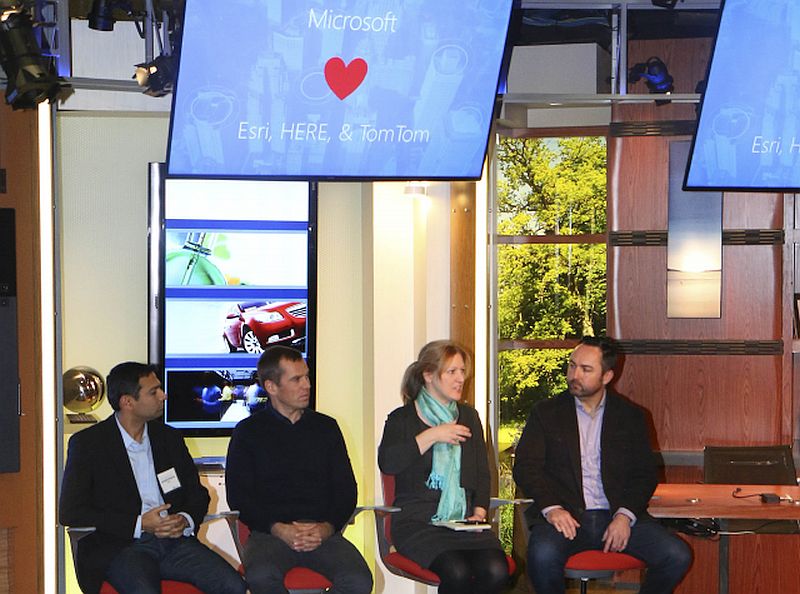
Microsoft has announced partnerships with mapping companies with an ambition of creating smart location-based services across its ecosystem. The partnership with TomTom, Here, and Esri was announced this week at the Microsoft Technology Center in Detroit.
With a partnership with TomTom, which offers maps, traffic and navigation services, Microsoft will integrate enterprise-grade location-based services to Microsoft’s Azure platform. The partnership will help both the companies to build and manage enterprise, mobile, Web, and Internet of Things applications that are location aware.
“Location is fast becoming a critical component of a broad range of applications and services. Teaming up with Microsoft will bring our technology to a much broader developer community on a platform they are already familiar with,” said Harold Goddijn, TomTom CEO on the partnership with Microsoft.
The Redmond giant also announced an extension of its collaboration with Here, a global map and data services provider, which already powers Microsoft’s services such as Bing, Cortana, Windows, and Office. With the extended partnership, Microsoft will use Here data and services into connected cars.
Talking about the partnership, Ashish Pandya, Director of Corporate Strategy for Here said, “We are entering a new era of services around connected cars in terms of safety, in-car productivity and making journeys more efficient. We don’t think one single entity can do this by itself. It’s going to take a collaborative effort. We’re very pleased to expand the agreement we’ve had with Microsoft.”
Microsoft also named Esri, which is a geographic information system (GIS) technology, as a partner. Notably, Esri’s real-time GIS run on Azure. It can ingest real-time location-based data including weather data, social media feeds, live sensor data and location services data from third-party companies including Here and TomTom.
Microsoft said that with its partners it aims to create the next “world graph,” a new data index of physical places, objects and devices and their interconnectivity. The company believes that the repository of geospatial data will be the next big concept in graph technology.
“In the future, Microsoft wants to enable global location-based services for customers differentiated by an open platform, with large data sets and natively integrated functionality for developers, and deep integration with other data graphs for new scenarios. We envision a platform that gives our customers choices, with many options for customization and opportunities to power smart cities, IoT and industrial transformation, from manufacturing to retail to automotive,” wrote Kevin Dallas, Microsoft Corporate Vice President of Business Development.
[Source:- gadget.ndtv]

